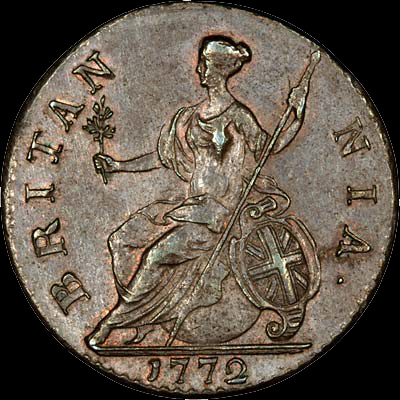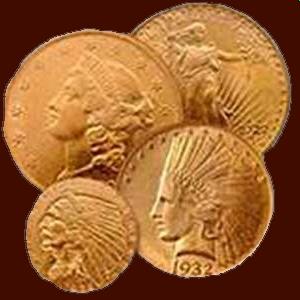








Designed by Nigel G Wilcox






The Paragon Of Metal Detecting
Powered By Sispro1
British Sterling Currency - Numismatics,
Half Penny
For Reference ONLY
Everything For The Detectorist
Half Penny




George III 1760 - 1820 AD
In the reign of King George III (1760-1820) the first issue of halfpennies did not come until 10 years after the king's accession, in 1770. Counterfeiting was rampant, and in 1771 the issuance of counterfeit copper coin became a felony; this however had little effect and for the next twenty years or so the majority of copper so-called coins in circulation were forgeries. In March 1782 a female counterfeiter was hanged, then fixed to a stake and burned before the debtor's door at Newgate prison in London. In a letter to Lord Hawkesbury of 14 April 1789, Matthew Boulton commented "In the course of my journeys, I observe that I receive upon an average two-thirds counterfeit halfpence for change at toll-gates, etc., and I believe the evil is daily increasing, as the spurious money is carried into circulation by the lowest class of manufacturers, who pay with it the principal part of the wages of the poor people they employ". Boulton's contract in 1797 to produce the Cartwheel pennies and twopences, thwarting the counterfeiters, did not extend to producing the halfpenny, though Boulton had expected that it would, and had prepared patterns of the appropriate size and weight in accordance with his ideas on the intrinsic value of copper coins. The reason the government gave for the omission of the denomination from the contract was that the large number of de facto halfpennies (including tokens and fakes) would be driven out of circulation and Boulton would be unable to produce enough coins to meet the demand that would ensue. Public demand for legal halfpennies soon forced the government to change its mind, and in 1798 a contract was issued to Boulton for him to produce halfpennies and farthings dated 1799. However in the meantime the price of copper had risen, and consequently the weight of the coins was reduced slightly, which resulted in them not being as popular as expected. In 1806 a further 427.5 tons of copper was struck into halfpennies by Boulton, but the price of copper had risen again and the weight was even less than the 1799 issue. This time, however, there was no unfavourable reaction from the public, so perhaps the national obsession with "intrinsic value" was over.
George III halfpennies were produced in three distinct phases:
- 1770-1775 (all years). Weight 9.2-10.8 grams, diameter 29-30 millimetres. Obverse shows a right-facing bust of the king, with the inscription GEORGIVS III REX, reverse shows a left-facing seated Britannia holding a spray and spear, with the inscription BRITANNIA and the date in the exergue beneath Britannia. (The king's bust has a fuller face in 1774 and 1775).
- 1799. Weight 12.0-13.1 grams, diameter 30-31 millimetres. Obverse shows a right-facing bust of the king, with the inscription GEORGIVS III DEI GRATIA REX, reverse shows a redesigned left-facing seated Britannia holding a spray and spear, with the inscription BRITANNIA 1799.
- 1806-1807. Weight 9.2-9.8 grams, diameter 29 millimetres. Obverse shows a right-facing bust of the king, with the inscription GEORGIVS III D G REX date, reverse shows a slightly different left-facing seated Britannia holding a spray and spear, with the inscription BRITANNIA.
In the reign of King George III (1760-1820) the first issue of halfpennies did not come until 10 years after the king's accession, in 1770. Counterfeiting was rampant, and in 1771 the issuance of counterfeit copper coin became a felony; this however had little effect and for the next twenty years or so the majority of copper so-called coins in circulation were forgeries. In March 1782 a female counterfeiter was hanged, then fixed to a stake and burned before the debtor's door at Newgate prison in London. In a letter to Lord Hawkesbury of 14 April 1789, Matthew Boulton commented "In the course of my journeys, I observe that I receive upon an average two-thirds counterfeit halfpence for change at toll-gates, etc., and I believe the evil is daily increasing, as the spurious money is carried into circulation by the lowest class of manufacturers, who pay with it the principal part of the wages of the poor people they employ". Boulton's contract in 1797 to produce the Cartwheel pennies and twopences, thwarting the counterfeiters, did not extend to producing the halfpenny, though Boulton had expected that it would, and had prepared patterns of the appropriate size and weight in accordance with his ideas on the intrinsic value of copper coins. The reason the government gave for the omission of the denomination from the contract was that the large number of de facto halfpennies (including tokens and fakes) would be driven out of circulation and Boulton would be unable to produce enough coins to meet the demand that would ensue. Public demand for legal halfpennies soon forced the government to change its mind, and in 1798 a contract was issued to Boulton for him to produce halfpennies and farthings dated 1799. However in the meantime the price of copper had risen, and consequently the weight of the coins was reduced slightly, which resulted in them not being as popular as expected. In 1806 a further 427.5 tons of copper was struck into halfpennies by Boulton, but the price of copper had risen again and the weight was even less than the 1799 issue. This time, however, there was no unfavourable reaction from the public, so perhaps the national obsession with "intrinsic value" was over.
George III halfpennies were produced in three distinct phases:
- 1770-1775 (all years). Weight 9.2-10.8 grams, diameter 29-30 millimetres. Obverse shows a right-facing bust of the king, with the inscription GEORGIVS III REX, reverse shows a left-facing seated Britannia holding a spray and spear, with the inscription BRITANNIA and the date in the exergue beneath Britannia. (The king's bust has a fuller face in 1774 and 1775).
- 1799. Weight 12.0-13.1 grams, diameter 30-31 millimetres. Obverse shows a right-facing bust of the king, with the inscription GEORGIVS III DEI GRATIA REX, reverse shows a redesigned left-facing seated Britannia holding a spray and spear, with the inscription BRITANNIA 1799.
- 1806-1807. Weight 9.2-9.8 grams, diameter 29 millimetres. Obverse shows a right-facing bust of the king, with the inscription GEORGIVS III D G REX date, reverse shows a slightly different left-facing seated Britannia holding a spray and spear, with the inscription BRITANNIA.
Royal Monarchy
Copyright © All Rights Reserved by Nigel G Wilcox · · E-Mail: ngwilcox100@gmail.com
INFORMATION DATA
Pages

George III
We do NOT buy or sell coins
Main Coin Menu

VIEW ALL MENUS
Member NCMD
6. S. Menu
























